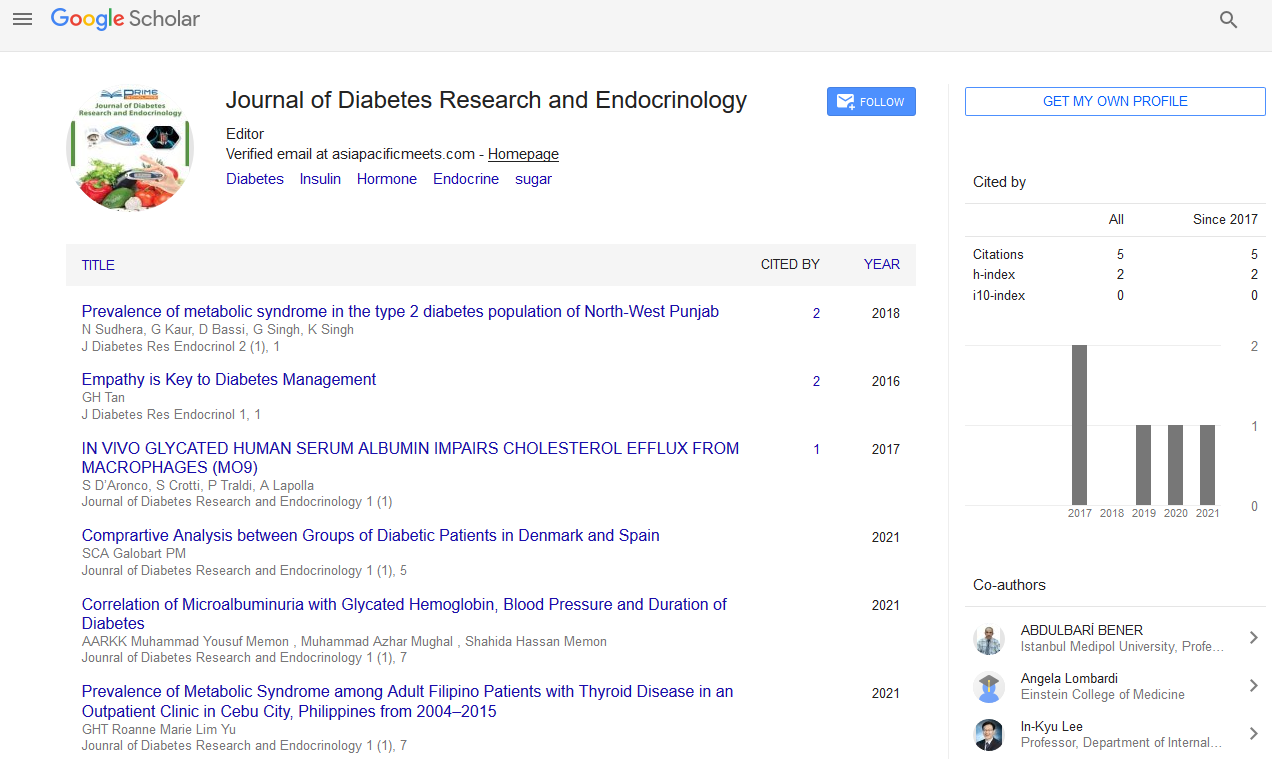Perspective - (2023) Volume 7, Issue 2
The Best Serum Glucose Fixation for Diabetic Patients is Glycaemic Control
Janina Goletzke*
Department of Nutrition, Istanbul Medipol University, Turkey
*Correspondence:
Janina Goletzke,
Department of Nutrition, Istanbul Medipol University,
Turkey,
Email:
Received: 31-May-2023, Manuscript No. IPJDRE-23-16871;
Editor assigned: 02-Jun-2023, Pre QC No. IPJDRE-23-16871;
Reviewed: 16-Jun-2023, QC No. IPJDRE-23-16871;
Revised: 21-Jun-2023, Manuscript No. IPJDRE-23-16871;
Published:
28-Jun-2023, DOI: 10.36648/ipjdre.7.2.14
Introduction
Control of glycaemia well average fasting blood glucose between
80 and 130 mg/dL, average fasting blood glucose greater
than 130 mg/dL. In diabetic patients undergoing PD, continuous
infusion of glucose and insulin into the peritoneal cavity
and their gradual absorption can assist in glycaemic control. In
both Type 1 and Type 2 diabetes, increased glycaemic control
reduces the risk of micro vascular complications, and long-term
treatment and follow-up studies have demonstrated that underlying
concentrated control is associated with reduced cardiovascular
risk.
Description
Poor glycaemic control might be brought about by factors connected
with both the patient and the medical care supplier.
Age, sex, education, marital status, BMI, smoking, diabetes
duration, and medication type all have an impact on glycaemic
control. Normal blood sugar levels are less than 99 mg/
dL during fasting; levels somewhere in the range of 100 mg/
dL and 125 mg/dL show pre diabetes, and levels more prominent
than 126 mg/dL demonstrate diabetes. A measure of the
difference between eating a standard amount of glucose and
eating a specific carbohydrate a food that contains sugar that
causes an increase in blood glucose a type of sugar. Food sources
with a high glycaemic index release glucose quickly and raise
blood glucose quickly. Each chemical possesses distinct capabilities.
Glucagon increases blood glucose levels, however insulin
lessens them. Somatisation prevents glucagon and insulin
release, however PP controls the exocrine and endocrine outflow
development of the pancreas. You can check your blood
sugar levels with a finger prick test or an electronic blood sugar
monitor called a flash glucose monitor or CGM. You can do this
couple of times every day helping you with looking out for your
levels as you approach your life and help you with working out
what to eat and how much remedy to take. Eating too much,
like snacking between meals. An absence of movement, dehydration,
taking some unacceptable or missing a portion of your
diabetes drug. Their fiber could help with hindering spikes in
glucose, and insulin levels, and fructose may be more worthwhile
for insulin levels than glucose. Apples also contain a lot
of nutrients. By and large, two bananas ought to be consumed
every day. How many bananas you eat in a day depends on how
well you tolerate vitamins and minerals. Vitamins and minerals
can simply be consumed more easily by some people without
any problems. Dairy-containing starches like milk and yogurt
have a low GI, making them suitable for diabetics as well. The
sugar source in dairy is lactose, which has a regularly low GI,
and the protein content of dairy food sources helps with moving
back the appearance of glucose into the blood steam.
Conclusion
In contrast, glucagon raises blood sugar levels while insulin lowers
them. A range you try to stay within is your blood sugar target.
Diabetes is for the most part treated with insulin the board
and glucose checking. This can be accomplished by means of
pens, siphons, infusions, and other devices. Glycaemic control
is the ideal serum glucose concentration for diabetic patients.
It is essential to identify factors affecting patients’ glycaemic
control in order to avoid control and complications.
Citation: Goletzke J (2023) The Best Serum Glucose Fixation for Diabetic Patients is Glycaemic Control. J Diab Res Endocrinol. 7:14.
Copyright: ©2023 Goletzke J. This is an open-access article distributed under the terms of the Creative Commons Attribution License, which permits unrestricted use, distribution, and reproduction in any medium, provided the original author and source are credited.

